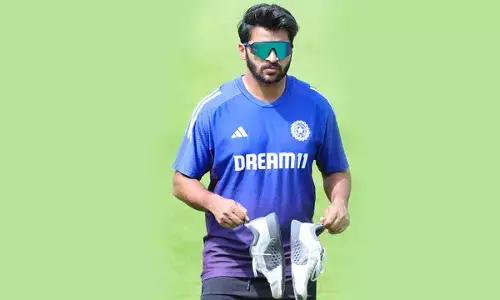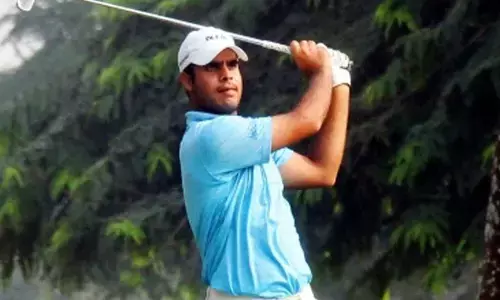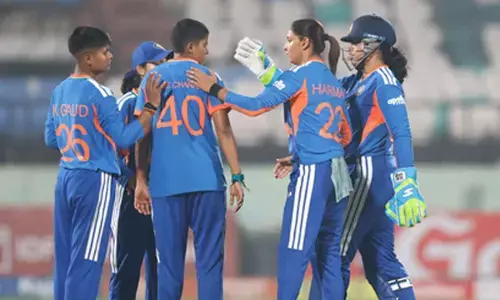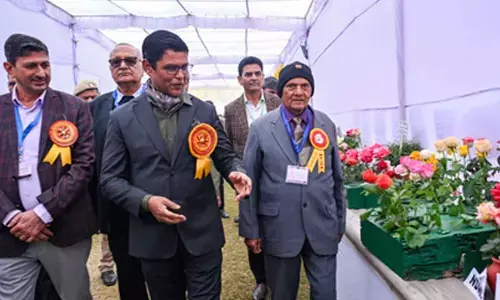Middle class neither here, there nor anywhere
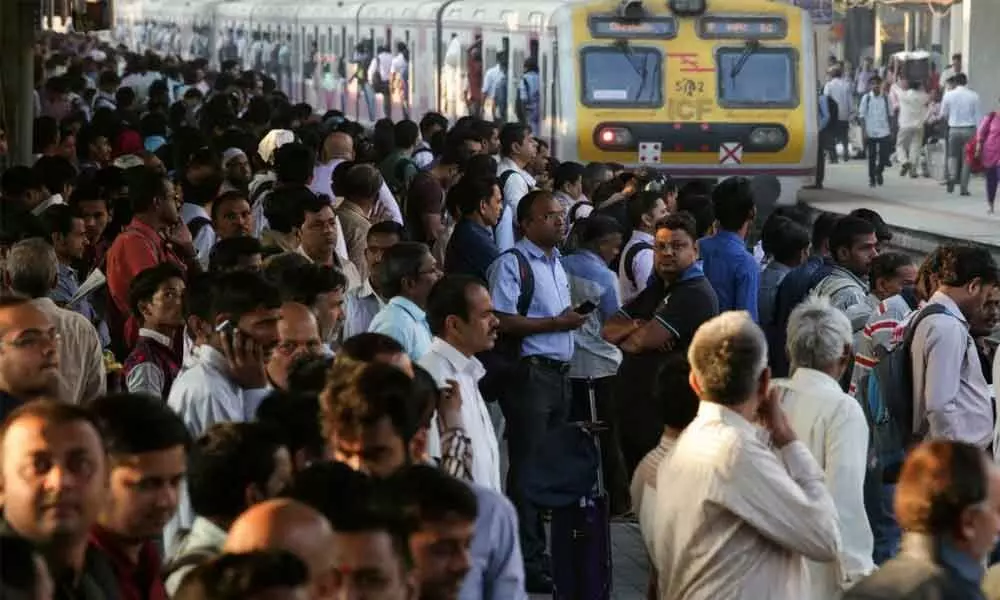 Middle class neither here, there nor anywhere
Middle class neither here, there nor anywhereDiplomat-turned-politician Pawan K Varma wrote a seminal book, The Great Indian Middle Class, in which he painstakingly traces the genesis, origin, evolution and development of the Indian middle class in a lucid manner
Diplomat-turned-politician Pawan K Varma wrote a seminal book, The Great Indian Middle Class, in which he painstakingly traces the genesis, origin, evolution and development of the Indian middle class in a lucid manner.
If at all, a section of the Indian society which is still in Trishanku Swarga since ages till date, it is the Indian middle class.
For centuries together, this is a class in the society which remained a catalyst whose presence is necessary for any new compound to emerge but in the final product it will not have any trace of it. The Indian Middle class continue to live in this limbo, often crying in the wilderness.
The Indian middle class, created by the colonial British Raj for their own benefits and purpose, abandoned and orphaned their child and forgot to take them along when they left India in 1947.
For generations the child remained here in India as the Indian middle class and as a holy cow, sacred but ill-fed! As a result, the middle class have to bear the brunt and there is none to speak on behalf of them or those who can plead for them. They are more or less for census purposes and used at the time of voting.
Since the time of drafting our Constitution, to a plethora of manifestos that followed the first general elections to the recent polls, priorities are always given to the poor, the so-called BPL families by way of welfare measures and indirectly the rich by way of number of sops through financial institutions.
There is no mention of the middle Class. We have political parties, leaders, civil society organisations, Courts that will stand for the marginalised, oppressed and depressed people in the state as well safeguard the interests of the super-rich Corporates.
But none for the middle class. With few exceptions like in Telangana State,thanks to Chief Minister K Chandrashekhar Rao no one else is ever bothered to do anything for the middle class.
According to well researched and evaluated studies the Indian middle class constitutes about 40 million or 3 per cent of the population. There is a significant income inequality within the country since the world's richest people as well as the poor live here.
The idea and category of middle class emerged in the early decades of the 19th century, during the British colonial period, that the term began to be used for a newly emergent group of people in urban centres, mostly in Calcutta, Bombay and Madras, three cities founded by the colonial masters.
Marxism defines social classes according to their relationship with the means of production. The "middle class" is said to be the class below the ruling class and above the proletariat in the Marxist social scheme and is synonymous with the term "petite" or "petty-bourgeoisie."
According to Karl Marx, the bourgeois during Middle Ages usually was a self-employed businessman, such as a merchant, banker, or entrepreneur, whose economic role in society was being the financial intermediary to the feudal landlord and the peasant who worked the for the land of the lord.
Traditionally the upper class were the titled nobility. The upper-class own property and companies (including investments) and create jobs. The working class are labourers who build, assemble or grow things.
The middle-class work for the upper class as managers and tell the working-class labourers what to do.
The middle class tend to work for someone else. They have a job. A career. Upper middle class tend to be self-employed. They own a job. The rich tend to own the business. They own that corporate ladder that the middle class are busy working up.
The rich understand that they need more people working for them to earn more money. The rich understand the power of passive income.
The biggest problem for the middle-class since ages has been the limbo in which they are stuck forever. They are neither rich nor poor, they don't have access to the subsidies that poor get and on the other hand they don't have loads of money through which they could solve their daily problems.
They are the class that pays the most tax yet are the ones that receive the least amount of benefits. They toil hard to earn every penny but don't have enough time to enjoy the fruits of their hard work.
They don't have a choice to sit around idle or think about vagaries of life, they have to put in large hours of work every day so that they can give their family a good life. They are the machinery that runs a nation yet their social status has been the same for centuries.
And the plight of middle class is worse during the period of national emergencies such as the present lockdown in the country.
The government both at the centre and state take care of the poor by implementing a slew of welfare measures for the below poverty line families in the country during the lock down.
Similarly, the union finance ministry, the RBI have announced stimulus package one after other for the rich corporates to get over their present-day crisis. But none for the middle class.
Imagine life of a typical middle-class family in the times of lockdown. With due respects to those who argue in favour of total prohibition in the country, in the non-availability of liquor, a rich person may buy his stuff paying any amount of money in the black market while the poor would get his local arrack or toddy without much difficulty.
Then what about a middle-class person, he neither can afford the exorbitant price that a liquor bottle is available in the black nor settle for a bottle of toddy.
A rich family can afford to have their house maid, servant, driver, cook even during the lock down period using their money power. The poor will have no such requirement.
It is the middle-class family that cannot live without the help of a maid to wash their clothes, utensils and clean their house, are the worst sufferers.
The rich can wait for the lockdown to be lifted even after a couple of months later and sois the casewith the poor as they are getting their daily ration.
But, what about the Middle Class? Who will pay for their EMIs? Who will pay their rent? Who will pay their children school, college, tuition, coaching classes fee? Who will take of the elders in their family?
What if the job they are doing right now are non-existent after the Lock Down? When will they get re-employment? More than anything else, who will come to their rescue during the present crisis?
Forget about answers to these queries, a cursory thinking on these questions will give night mares? And if the lockdown period is continued for more than the stipulated time, the damage caused among these middle classes would be much more than the damage caused by the COVID19.
God forbid such a plight! Middle class is neither here nor there nor anywhere.
(With VJM Divakar)


